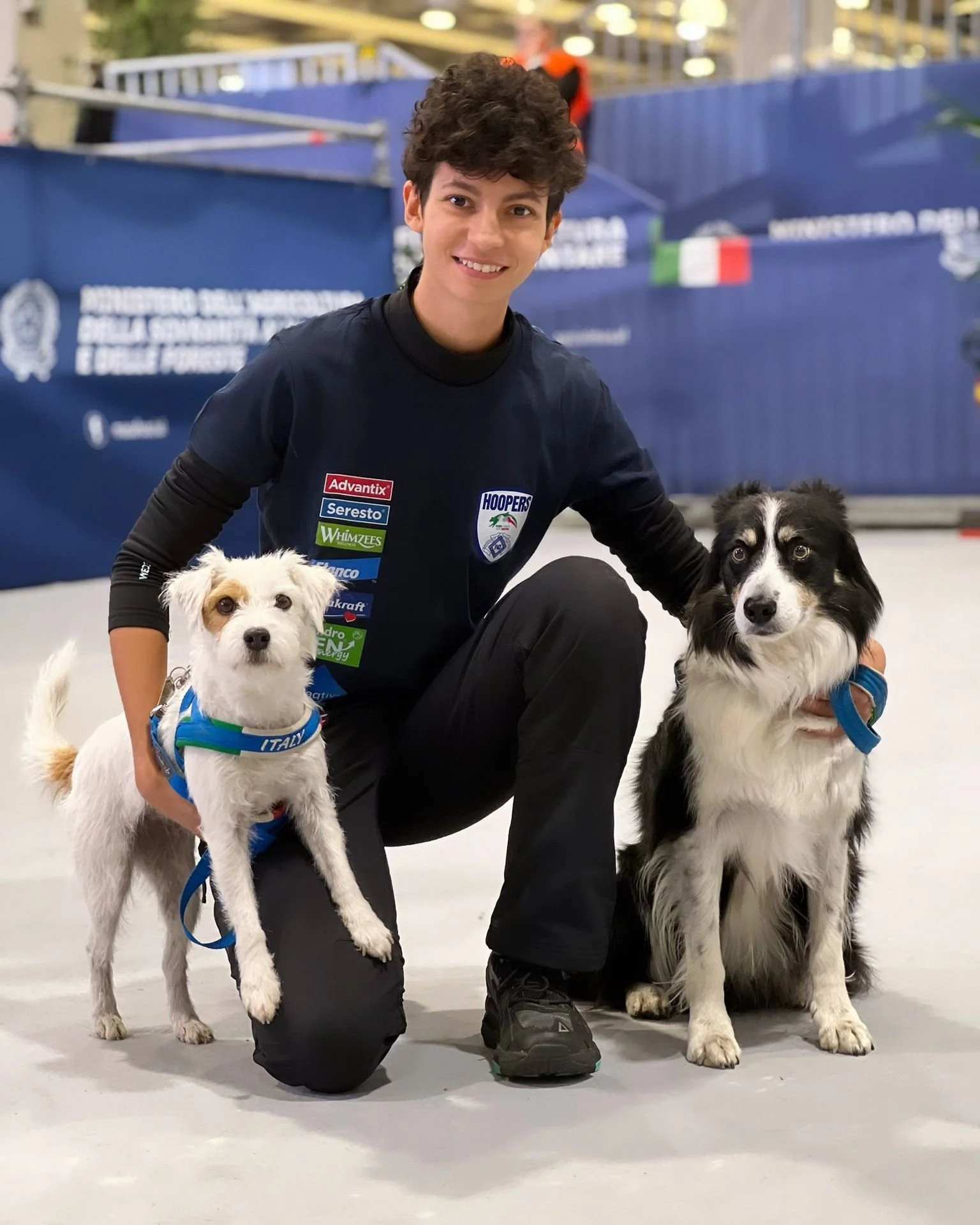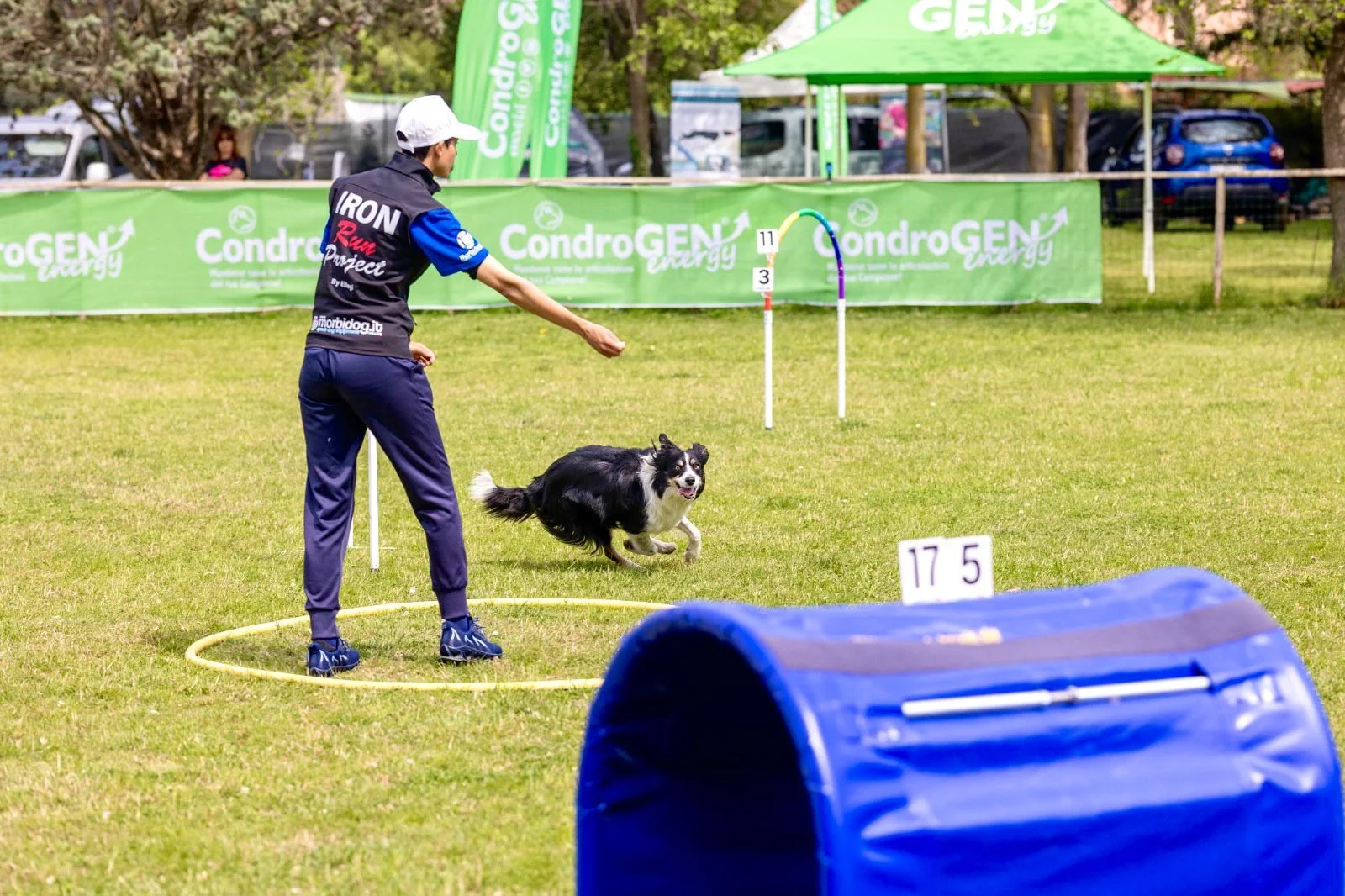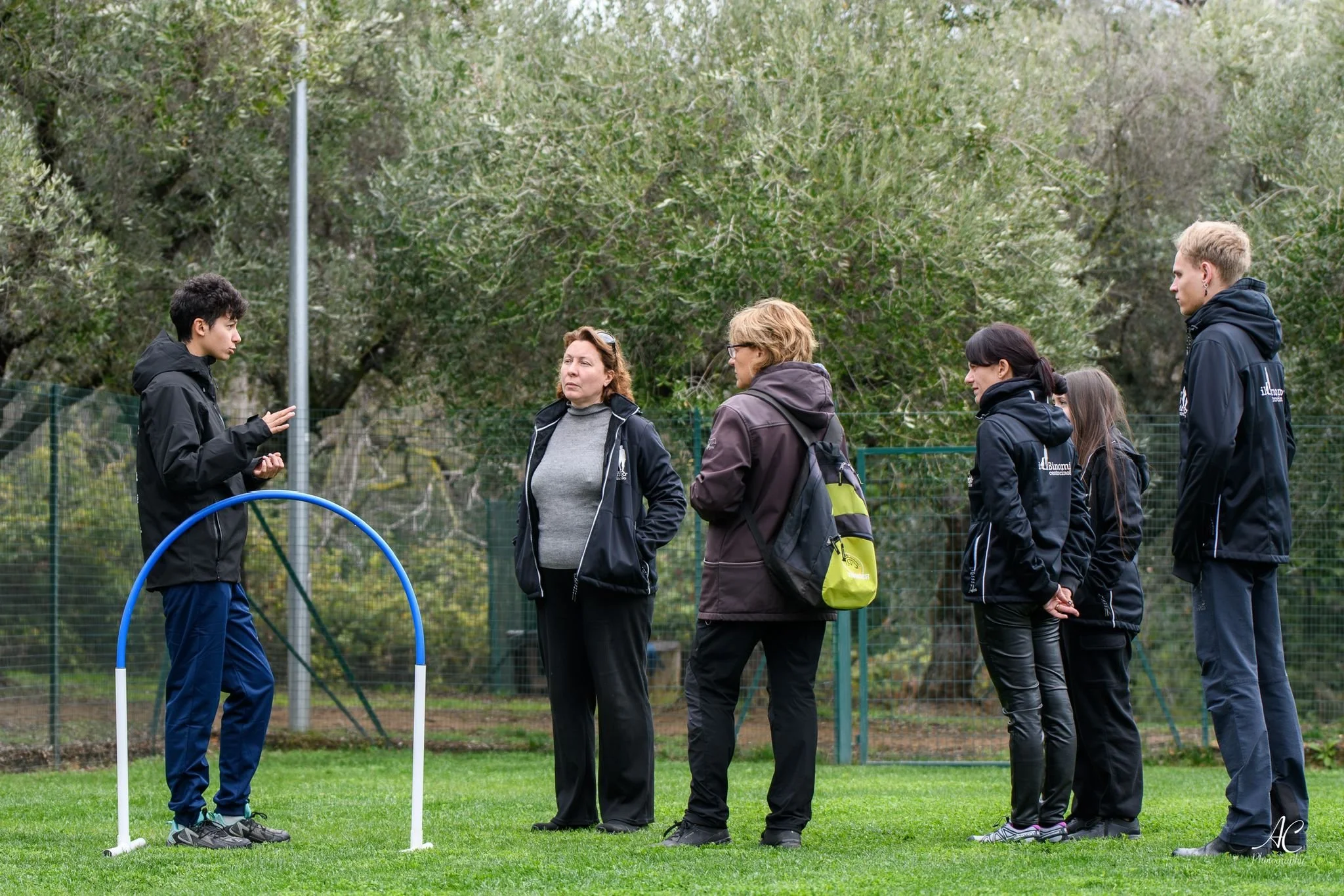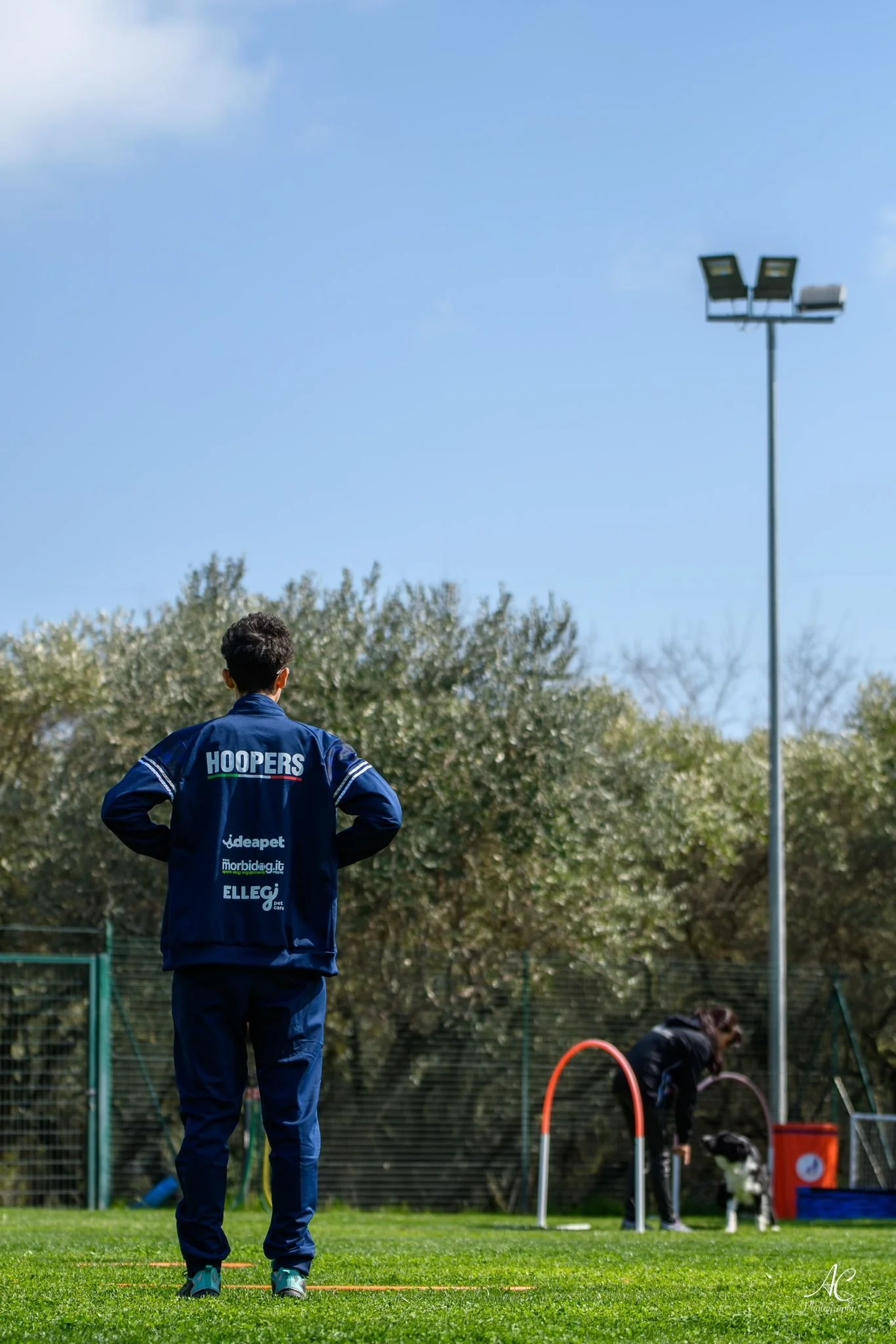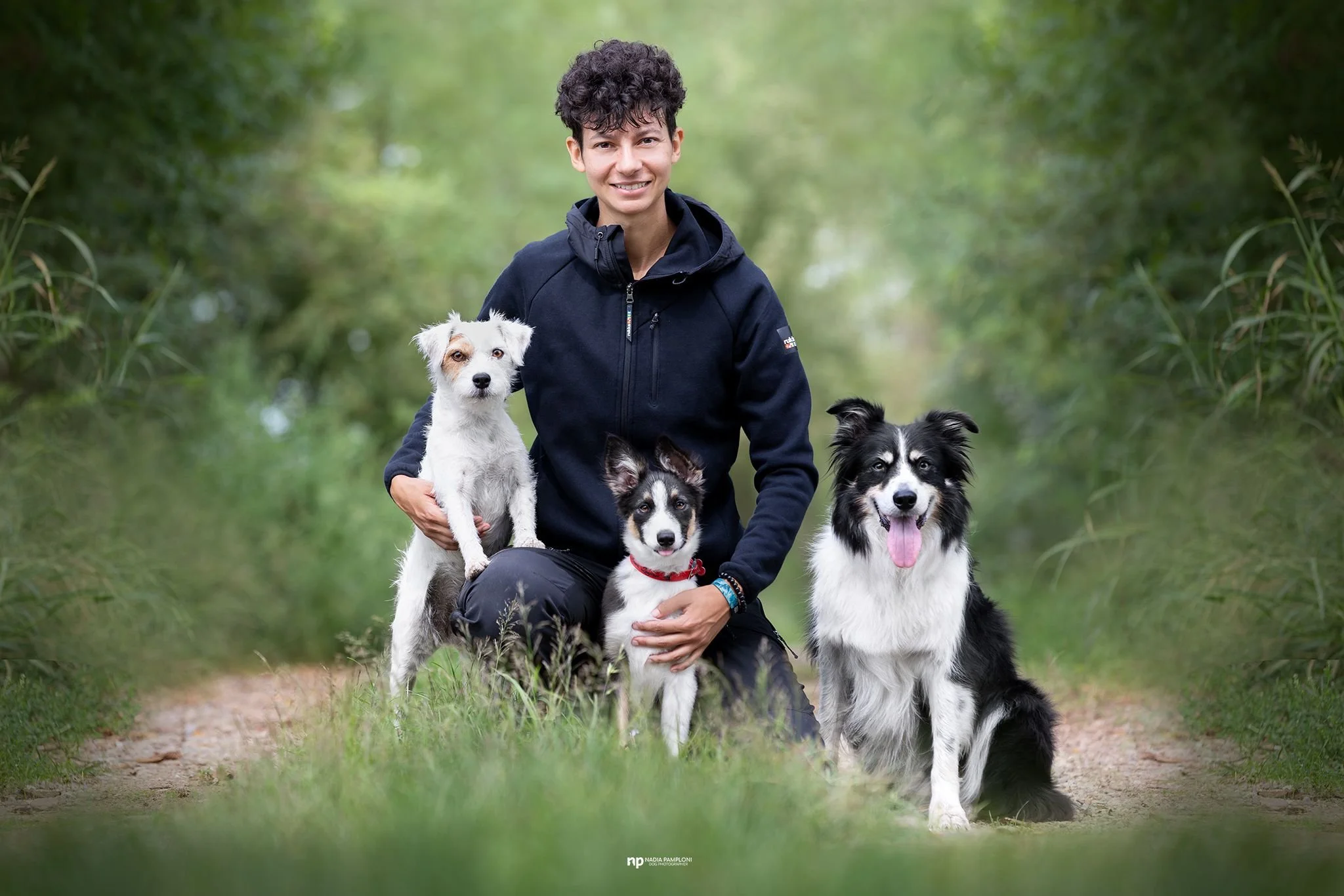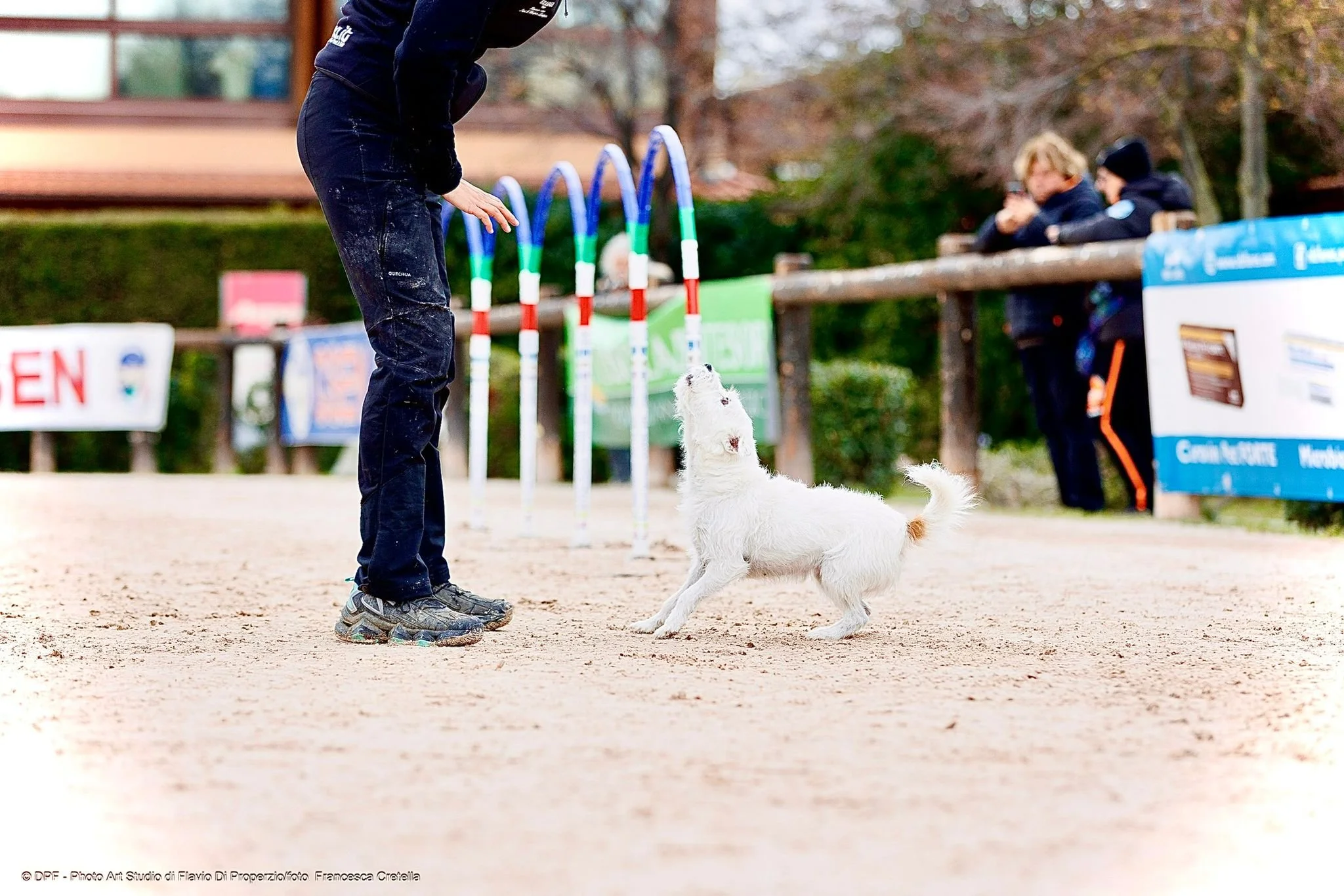Precision, perspective and partnership - Renata’s training philosophy in hoopers
What does it take to become a successful hoopers team? According to Italian coach Renata Camis, it all starts with four key elements: Lines, Skills, Timing and Trust. In this post, we dive into her LSTT method and explore how she uses it.
This is the second part of a two-part series which explores the world of hoopers through the eyes of Italian coach Renata Camis, who shares her passion for teamwork, trust, and thoughtful training. Get to know Renata from here.
The serie includes:
Part 1: Trust and patience hoopers - a talk with Renata Camis from Italy
Part 2: Precision, perspective and partnership - Renata’s training philosophy in hoopers
Renata with her dogs Wooper Looper (a Parson) and Levi (a Border Collie).
A method built for clarity: LSTT
Renata developed her LSTT method to simplify the complex world of hoopers into a clear, memorable framework. Each letter stands for an essential ingredient:
L for Lines
S for Skills
T for Timing
T for Trust
Every team is different: some handlers struggle with timing, others need to build more trust or refine their understanding of lines. The LSTT framework helps identify which piece of the puzzle needs attention, so training can focus where it truly matters.
Let’s take a closer look at what each element means in practice.
L is for lines
In hoopers, the way your dog moves through the course matters as much as the direction itself. Seeing the line through your dog’s eyes helps you understand what they will naturally notice and how they’ll flow from one obstacle to the next.
Before training or competing, Renata always walks the course and studies it from the dog’s perspective. It helps her choose clearer cues and spot distractions that might affect the run.
“I like to go inside the course and see what my dog will see.”
S is for skills
Strong basics are the foundation of everything. Renata believes that the more clearly a dog understands each cue, the more confidently it can work, even far away from the handler.
“If there’s a tunnel but I ask for a tight turn, the dog should do a tight turn, because we trained that.”
She focuses on clarity before speed. When both the dog and handler know exactly what each cue means, handling becomes easier and common trust starts to build.
T is for timing
Timing turns a good run into a great one. In hoopers, giving a cue too early can send the dog in the wrong direction; too late, and the moment is already gone.
Renata wants to remind us that timing must be flexible: what works for one dog may not work for another. A fast, driven dog might need calm, precise cues, while a calmer dog benefits from encouragement and energy.
“My Border Collie needs control and my small Parson needs cheering to stay confident. Timing must be different with these two dogs.”
Good timing creates smooth lines, clear turns and confident dogs.
T is for trust
Trust is the heart of the LSTT method. Once the lines, skills and timing are in place, the handler must let go and believe in the dog’s ability to do the job.
Dogs don’t know the course in advance, they rely entirely on the handler’s guidance. In return, they need to feel that we trust them back.
“The dog says ‘I trust you’. So we have to trust them too.”
That mutual trust is what makes hoopers so unique. It’s not about control; it’s about connection.
Renata discussing with her students.
Coaching the human side
Renata doesn’t only train dogs, she trains handlers, too. Her goal is to help people become confident, independent decision-makers in the course. That includes developing memory, improvisation skills and the ability to stay calm when things don’t go as planned.
One way she practices this is by setting up a “fake course”. From the handling area, several short sequences lead out into the field. At any moment, Renata can call out a number, and the handler must immediately remember where that sequence begins, where it starts, and where to send the dog.
The exercise is fun, but it forces the handler to think quickly and make decisions under stress, just like in a real competition.
She designs exercises that simulate real competition challenges and teaches handlers to improvise. What matters most to Renata isn’t flawless runs, but the connection, a team where both dog and handler keep learning and growing together.
“In competitions, the dog may surprise you. You have to react in the moment and that can be trained.”
Training starts with understanding
Whether she’s working with a fast-moving Border Collie or a sensitive Shetland Sheepdog, Renata starts by observing. She watches how the team works together, asks about their goals, and adjusts the training path accordingly. But one thing stays the same: the basics come first.
“If there’s a problem at point B, I stop there and work on B, not just cover it with a plaster.*”
She avoids quick fixes and focuses on real understanding. Once the basics are solid, everything else becomes easier. The goal is not just to finish a course, but to create lasting clarity and confidence between handler and dog.
*)”Covering the problem with plaster” means that you try to find a quick solution to your problem instead of training the basics. Normally plaster will come off at some point and you have to go back to training to get it fixed.
A message for hoopers enthusiasts
Renata’s philosophy is inclusive and encouraging. She believes every dog can enjoy hoopers: regardless of size, speed, or experience level. What matters most is not the result, but the journey of learning together.
“Hoopers is not just about speed. A slower dog with skills can win a competition and that’s the beauty of this sport.”
For Renata, the greatest reward is seeing dogs and handlers grow together, run together and enjoy every run as a team.
This post continues the discussion that began in Part 1: Trust and patience in hoopers, where Renata shared her thoughts on what makes this sport so special and sometimes hard.
If you missed it, you can read it here:
Together, these two stories show both sides of Renata’s world, the philosophy that shapes her passion for hoopers, and the practical approach she uses to help teams grow through trust, structure and understanding.
Happy Hoopers - for hoopers handlers and coaches
Happy Hoopers is a site designed for hoopers enthusiasts and coaches. Here you’ll find information about the sport, ideas to inspire your training, and insights that go a little beyond hoopers itself. All with the goal of helping you and your dog enjoy the journey together.
The site was founded by Tiina Wikström, a hoopers instructor, coach trainer, and mental performance coach. Tiina is passionate about supporting handlers and coaches in creating positive, motivating, and enjoyable training experiences for both dogs and humans.
Whether you’re just starting your hoopers adventure or you’re an experienced trainer looking for fresh perspectives, Happy Hoopers is here to spark your creativity and keep your sessions fun and purposeful.
Learn more: www.happyhoopers.fi


